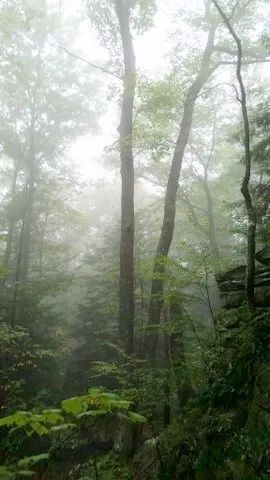
Weekly Gem #91 Arctic tundra ... in West Virginia?
Published 10/22/2016
Location: This 'hidden gem' is located about 6 miles northwest of Mill Point, WV. If you head NW on 39, you can't miss it (see Clue Me! Map ). The gem is the Cranberry Glades Botanical Area, which is a bit of Arctic tundra that has hung on by its fingernails for over 10,000 years. At Cranberry Glades, you'll find orchids, carnivorous plants, lots of moss, and of course cranberries, surrounded by thickets of forest that that are likely as not to be partially obscured by fog.
As you wander along the boardwalk and see all the plants that don't belong here, you might wonder how this place happened to keep it's Ice Age look and feel while all around is the more typical Appalachian temperate forest. The answer can be seen as you look in all directions, and realize that all directions are 'up.' The Glade is the bottom of a bowl that is formed by the hills on all sides. Every night, the air gets cool and dense, and drains off the hillsides into the Glade, where it is trapped. Every night, the Glade is colder than the neighboring hills and valleys. Every day, it starts and stays cooler than the neighbors. The area is also very moist, with the bottom of the bowl filled in with sodden, decayed moss (i.e. peat) rather than soil, and which is basically a huge sponge containing a small lake.
This cluster of happy accidents (Bob Ross would have loved it) combine to make the Glade extremely hospitable to 'tundra.'
.........
Here's the hidden gem entry from our Clue Me! map.
Clue
Oh for peat's sake!
Description
Cranberry Glades Botanical Area and Boardwalk
Why It's Interesting
The boardwalk through The Glades allows you to walk through a boreal-type bog without disturbing the fragile ecosystem. Many of the plants that grow in this bog are the same plants that grow in the arctic tundra. This ecosystem was "left behind" as the glaciers that covered the northern hemisphere about 10,000 years ago receded. Much of the spongy bog is made up of peat 10 feet deep! (Say, "peat ten feet deep" really fast 10 times.)















